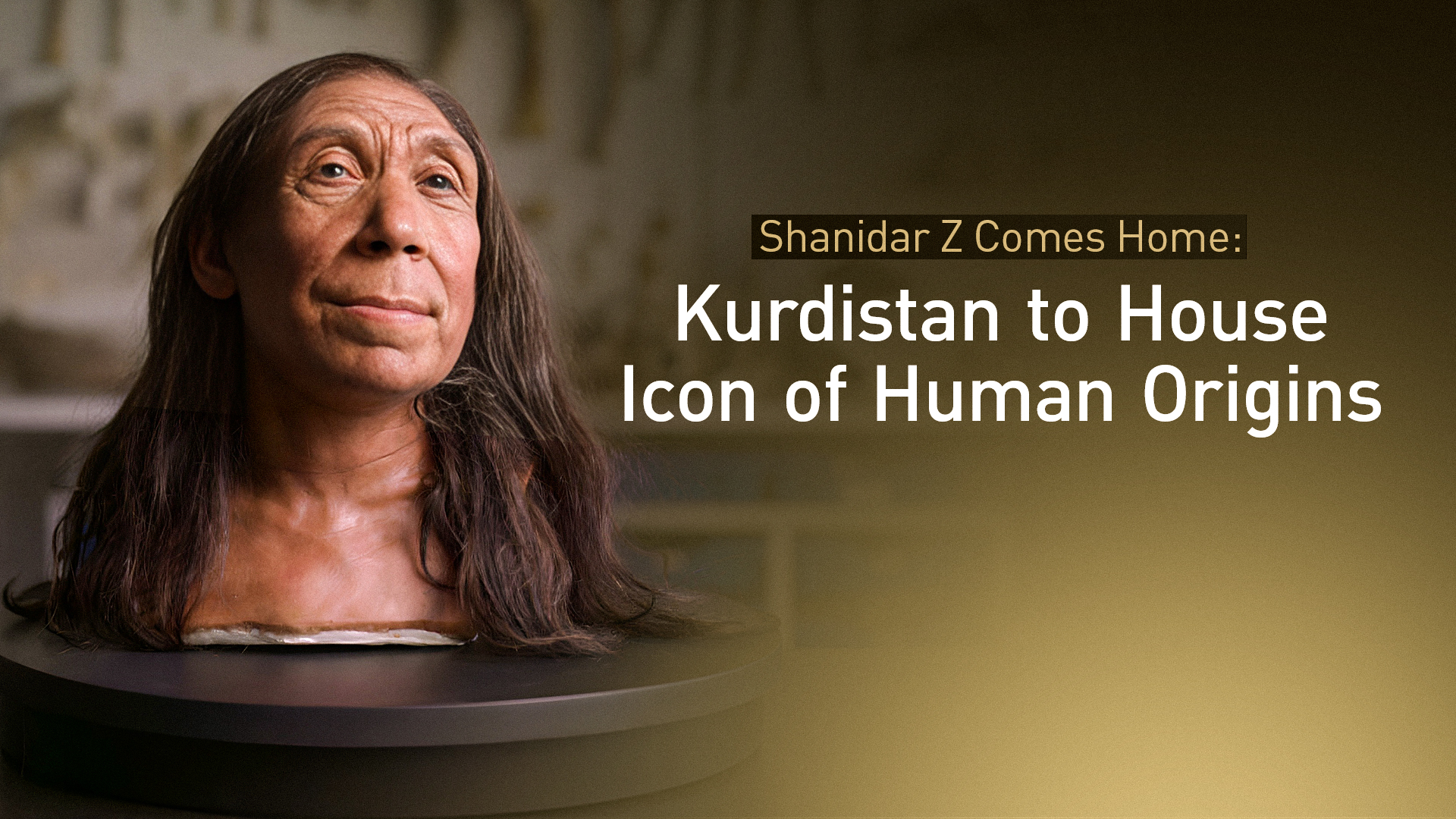Shanidar Z Comes Home: Kurdistan to House Icon of Human Origins
“We are building a museum near Shanidar Cave to preserve all the archaeological pieces found there. If the museum is completed by year’s end, Shanidar Z will be placed there," said Soran Amir, head of the Mergasor Archaeological Department.

By Kamaran Aziz
ERBIL (Kurdistan24) – In a discovery hailed as one of the most important paleoanthropological milestones of recent decades, the reconstructed skull and facial model of a 75,000-year-old Neanderthal woman—named Shanidar Z—will be returned to the Kurdistan Region by the end of this year. The announcement was made by Soran Amir, head of the Mergasor Archaeological Department, who told Kurdistan24 that once the new Shanidar Museum is complete, the skull will be housed near the cave where it was originally discovered.
“Since 2014, the Kurdistan Regional Government has had an agreement with Cambridge University,” Amir stated. “We are building a museum near Shanidar Cave to preserve all the archaeological pieces found there. If the museum is completed by year’s end, Shanidar Z will be placed there; if not, it will be temporarily housed in the Erbil Museum.”
Shanidar Cave, located in the Bradost mountain range of Mergasor in the Soran Independent Administration, has long been recognized for its archaeological significance. Excavation work began in 1951, leading to the discovery of multiple Neanderthal skeletons, but the 2018 unearthing of Shanidar Z by a Cambridge University-led team has sparked renewed global interest in the region’s prehistoric past.
A Discovery That Redefines Neanderthal History
Shanidar Z, believed to have died in her mid-forties, was meticulously excavated and analyzed over a seven-year period in Britain. The research—led by Dr. Emma Pomeroy and Professor Graeme Barker of Cambridge University—utilized CT scans, protein analysis, and 3D reconstruction to piece together her fragmented skull. The result was a lifelike model that revealed a surprising similarity between Neanderthals and modern humans.
The skull and reconstruction have captivated global media and academic circles. Featured in international documentaries such as BBC and Netflix’s “Secrets of the Neanderthals,” the case of Shanidar Z has reignited debates around Neanderthal intelligence, culture, and social practices. Evidence of possible burial rituals and cooking remains found near her body suggest a society capable of complex behavior and emotional bonds.
“The discovery challenges the outdated view of Neanderthals as brutish and primitive,” Dr. Pomeroy told Kurdistan24. “We’re uncovering a much more human story—one that includes empathy, memory, and social traditions.”
Shanidar Cave: A Window into Prehistoric Life
Shanidar Cave has yielded Neanderthal remains since the mid-20th century. It first gained prominence in the 1960s when nine skeletons were found buried in patterns that suggested ritual practices. The 2018 discovery of Shanidar Z confirmed the cave’s ongoing significance as a site of human evolutionary history.
Located 145 kilometers northeast of Erbil in the Zagros Mountains, the cave is now poised to become a global research and tourism hub. Under the terms of a renewed agreement between the Kurdistan Regional Government and Cambridge University, an advanced archaeological center is being constructed to house Shanidar Z and other finds. The site will serve both scientific inquiry and public education.
“The Cambridge team returns every April and remains until September to continue excavation,” said Amir. “More than 60 years of collaborative work between local and international archaeologists have given us priceless insights, and Shanidar Z is just the latest chapter.”
Global Significance and Scientific Impact
International media and scientific communities have praised the discovery. CNN, CBS News, BBC, and The Telegraph all covered Shanidar Z’s reconstruction. Cambridge’s methods—ranging from enamel protein analysis to CT imaging—set a new standard for archaeological preservation. According to the Archaeological Institute of America, the reconstruction of Shanidar Z’s face marks a turning point in our understanding of Neanderthals.
“We now know Neanderthals were not only physically similar to us but may have shared in rituals, food preparation, and community life,” said Professor Barker. “It changes everything we assumed about their capabilities.”
This revelation has renewed discussions about interbreeding between Neanderthals and modern humans and has led to a surge of interest in Kurdistan as a cradle of ancient civilization.
Looking Ahead: Heritage, Tourism, and Education
The Kurdistan Region’s role in preserving global heritage is now in the spotlight. The return of Shanidar Z and the completion of the Shanidar Museum are expected to attract scholars, tourists, and students from around the world.
“The reconstruction of Shanidar Z’s face is more than a scientific triumph,” Amir concluded. “It’s a moment of pride for the people of Kurdistan. We are not only guardians of modern history but of humanity’s deep past.”
As work continues on the museum and excavation site, Shanidar Z stands as a testament to scientific rigor, international cooperation, and the enduring mysteries of our evolutionary journey.
Kurdistan24 Correspondent Mateen Kareem Khan contributed to this report.
